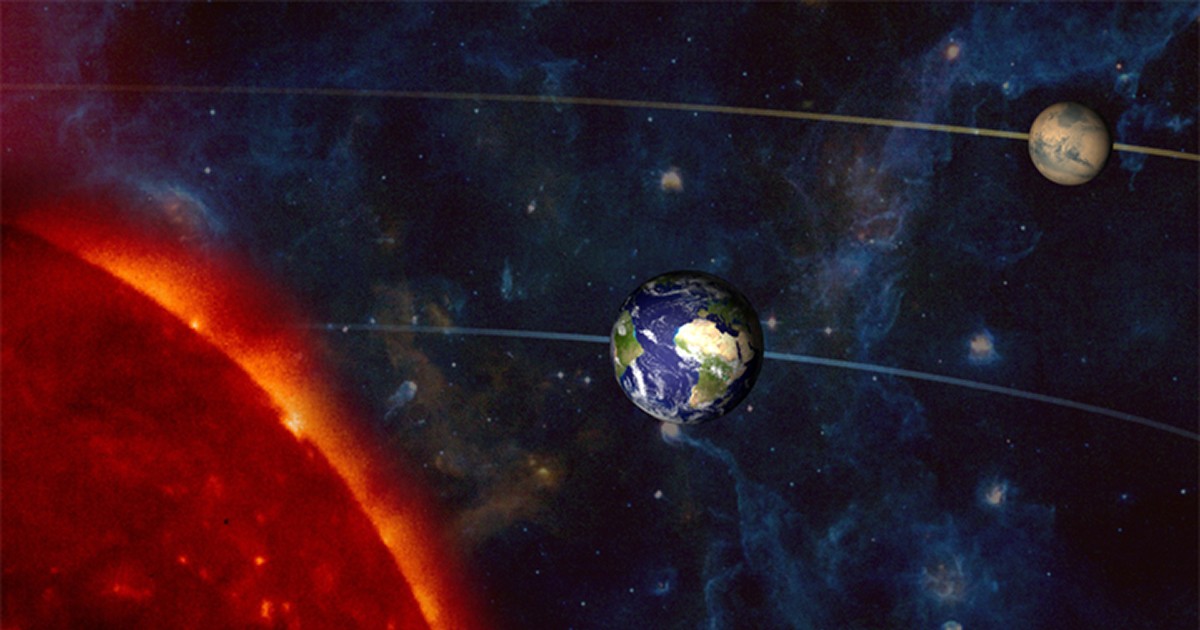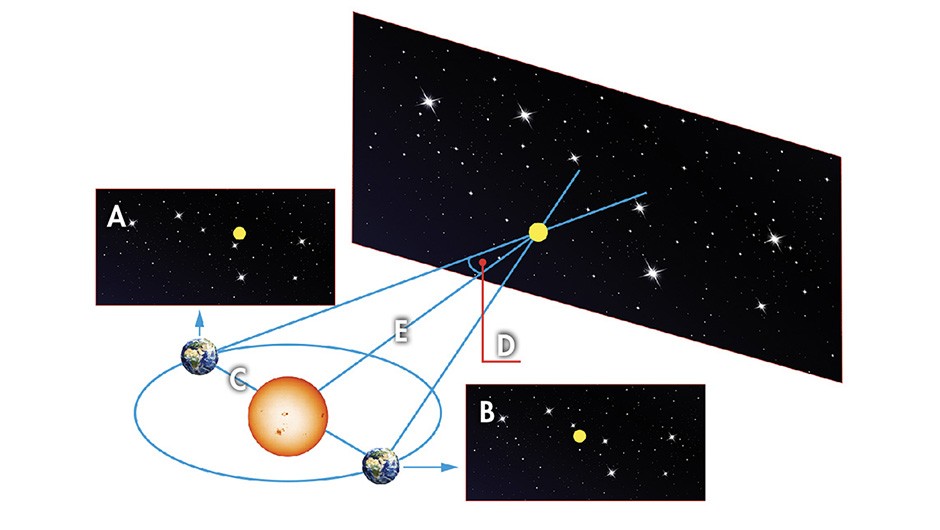Space is vast, truly unimaginably so. When we start talking about distances to stars and galaxies, the numbers become astronomical very quickly, filled with so many zeros they can be hard to grasp. Using everyday units like kilometers or miles to measure these cosmic distances would be like measuring your daily commute in millimeters – technically possible, but utterly impractical.
To make things easier to manage, astronomers use different units of measurement depending on the scale they’re working with. Within our own Solar System, we often use the Astronomical Unit (AU).
One AU is defined as the average distance between the Earth and the Sun, which is about 150 million kilometers (93 million miles). While our Solar System is vast in human terms, with a diameter of roughly 1,921 AUs, when we look beyond our solar neighborhood, even AUs become too small to handle comfortably.
For measuring the immense distances across the galaxy and the universe, scientists use units like the parsec. A parsec is based on the concept of parallax and is equivalent to the distance at which one Astronomical Unit subtends an angle of one arcsecond (1/3600 of a degree). This works out to be a staggering 206,265 AUs, or approximately 30.9 trillion kilometers (19.2 trillion miles). While parsecs are useful for professional astronomy, for conveying these distances to a wider audience, the light-year is often preferred as it offers a more intuitive understanding of cosmic scale related to something we all experience: time.
This is where the light-year comes in as a standard unit for measuring distances to stars and galaxies outside our Solar System.
 Earth
Earth
Defining a Light Year: Distance and Time
In simple terms, a light-year is the distance that light travels in a vacuum in one year. Since light travels at an incredible speed of approximately 300,000 kilometers per second (186,000 miles per second) – the fastest speed possible in the universe – a light-year represents a truly enormous distance. To put it in perspective:
- One light-year is equal to about 9.46 trillion kilometers (5.88 trillion miles).
- In Astronomical Units, one light-year is approximately 63,241 AU.
- In parsecs, one light-year is about 0.30 parsecs.
To further break it down, consider shorter timeframes related to light speed:
- Light-second: 300,000 km (186,000 miles)
- Light-minute: Approximately 18 million km (11 million miles)
- Light-hour: About 1.1 billion km
Using these light-time units, we can also express other astronomical distances:
- One AU is about 8.3 light-minutes.
- One parsec is equivalent to 3.26 light-years.
 A diagram showing parallax. A and B show how a nearby star appears to move against its background when Earth is at different positions. C is equal to 1 AU. D is a parallax angle of one arcsecond. E is a parsec
A diagram showing parallax. A and B show how a nearby star appears to move against its background when Earth is at different positions. C is equal to 1 AU. D is a parallax angle of one arcsecond. E is a parsec
Light Years: A Cosmic Time Machine
When we observe objects in space, we are not seeing them as they are now, but as they were when the light we are observing left them. Light takes time to travel across space, even at its immense speed. This means that the farther we look into the cosmos, the further back in time we are looking.
For example, Proxima Centauri, our nearest stellar neighbor, is approximately 4.25 light-years away. Therefore, the light we see from Proxima Centauri today actually began its journey to us four years and three months ago. If Proxima Centauri were to suddenly explode, we wouldn’t know about it on Earth for another 4 years and 3 months because that’s how long it would take for the light from that event to reach us.
Looking out even further, the radius of the observable Universe extends to about 46.6 billion light-years. This means we are seeing light that has traveled for 46.6 billion years to reach us, offering a glimpse into the universe as it was in its distant past.
 Galaxy NGC 1097 is 45 million lightyears from Earth, meaning we see it as it existed 45 million years ago. Credit: ESO/TIMER Survey
Galaxy NGC 1097 is 45 million lightyears from Earth, meaning we see it as it existed 45 million years ago. Credit: ESO/TIMER Survey
How Long to Travel One Light Year: Putting Speeds into Perspective
Now, to directly address the question: how long would it take to travel a light-year? This depends entirely on the speed of travel. Let’s consider various speeds, from familiar ones to incredibly fast spacecraft:
- Crewed Spacecraft (like Apollo): Reaching speeds of around 39,400 km/h (24,500 mph), it would take approximately 27,000 years to travel one light-year.
- Commercial Airplane: Flying at 965 km/h (600 mph), it would take an astonishing 1 million years to cover a light-year.
- Car: Driving at an average speed of 90 km/h (56 mph) would require a journey of 12 million years to travel a single light-year.
- Walking: At a leisurely pace of 5 km/h (3 mph), it would take an incredible 216 million years to walk one light-year – and that’s without any rest stops!
- Earth’s Orbital Speed: Earth orbits the Sun at about 107,000 km/h (67,000 mph). At this speed, it would still take 10,000 years to travel a light-year.
- Solar System’s Speed through the Galaxy: Our entire Solar System moves through the Milky Way galaxy at a speed of about 720,000 km/h (448,000 mph). Even at this relatively high speed on a cosmic scale, it would still take 1,500 years to travel one light-year.
 A car with an average speed of 90 km/h (56 mph) would take 12 million years to travel a lightyear. Credit: Jeffrey Davis / Getty Images
A car with an average speed of 90 km/h (56 mph) would take 12 million years to travel a lightyear. Credit: Jeffrey Davis / Getty Images
The Dream of Light-Speed Travel
Currently, achieving faster-than-light travel remains in the realm of science fiction, with concepts like wormholes and warp drives depicted in movies. However, scientists are exploring ideas to get closer to light speed.
One promising concept involves using the power of light itself for propulsion. The idea is to use a massive array of synchronized lasers, perhaps city-sized, to fire photons at a tiny, lightweight spacecraft. The pressure from these photons could potentially push the spacecraft to speeds of up to 25% of the speed of light.
If such technology were to become reality, it could drastically reduce travel times to interstellar destinations. At 25% light speed, reaching Proxima Centauri, which is 4.25 light-years away, might become possible in under 20 years – a journey still long in human terms, but significantly shorter than the millennia it would take at current spacecraft speeds.
While traveling a light-year in a human lifetime remains a formidable challenge, understanding the sheer scale of these distances and the time it would take is crucial for grasping our place in the cosmos and the ambition of interstellar exploration.
